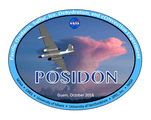The PAN and Trace Hydrohalocarbon ExpeRiment (PANTHER) is an in situ airborne analyzer that uses electron capture detection and gas chromatography to measure trace gases, including methane, peroxyacyl nitrate (PAN), and carbon monoxide. PANTHER has a sampling frequency of 60 to 120 seconds and an accuracy of about 2% for most species, except PAN, which is 10%. The development of PANTHER was funded by NASA’s Instrument Incubator Program and NOAA’s Climate and Global Change Program.


Instrument Details
- Meter/Analyzer
- Earth Science > Atmosphere > Atmospheric Chemistry > Trace Gases/trace SpeciesEarth Science > Atmosphere > Atmospheric Chemistry > Hydrogen CompoundsEarth Science > Atmosphere > Atmospheric Chemistry > Carbon And Hydrocarbon Compounds > MethaneEarth Science > Atmosphere > Atmospheric ChemistryEarth Science > Atmosphere > Atmospheric Chemistry > Carbon And Hydrocarbon Compounds > Carbon MonoxideEarth Science > Atmosphere > Atmospheric Chemistry > Halocarbons And HalogensEarth Science > Atmosphere > Atmospheric Chemistry > Nitrogen Compounds > Nitrous OxideEarth Science > Atmosphere > Atmospheric Chemistry > Hydrogen Compounds > Molecular HydrogenEarth Science > Atmosphere > Atmospheric Chemistry > Nitrogen Compounds > Peroxyacyl NitrateEarth Science > Terrestrial Hydrosphere > Water Quality/water Chemistry > Water Characteristics > Nitrogen CompoundsEarth Science > Atmosphere > Atmospheric Chemistry > Halocarbons And Halogens > ChlorofluorocarbonsEarth Science > Atmosphere > Atmospheric Chemistry > Carbon And Hydrocarbon Compounds
- Troposphere
- 60-120 s
- Point
- 1050 THz
- https://www.acom.ucar.edu/start/panther.pdf
James W. Elkins, Eric Hintsa, Fred Moore, Brad Hall
James W. Elkins
Currently unavailable
NASA Instrument Incubator, NOAA Climate and Global Change Programs
Currently unavailable
data center outside NASA
Filter data products from this instrument by specific campaigns, platforms, or formats.







